Formula C14H6O8 Density 1.67 g/cm³ | Molar mass 302.197 g/mol | |
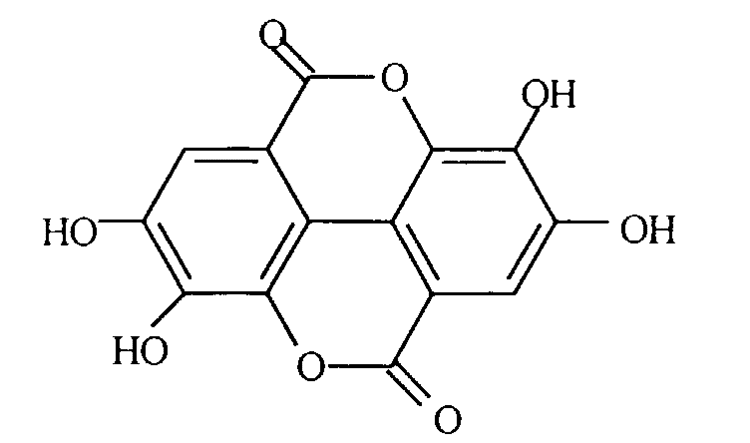 | ||
Ellagic acid is a natural phenol antioxidant found in numerous fruits and vegetables. The antiproliferative and antioxidant properties of ellagic acid have prompted research into its potential health benefits. Ellagic acid is the dilactone of hexahydroxydiphenic acid.
Contents
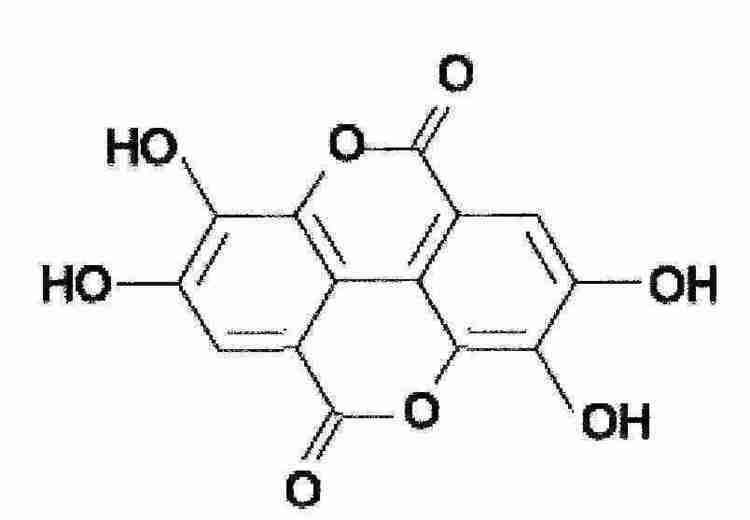
Biosynthesis
Plants produce ellagic acid from hydrolysis of tannins such as ellagitannin and geraniin.
Biodegradation
Urolithins are microflora human metabolites of dietary ellagic acid derivatives
History
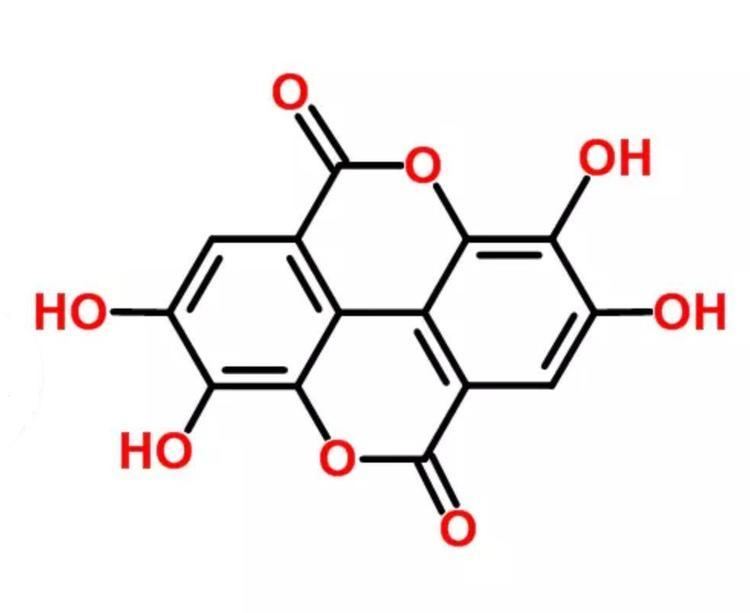
Ellagic acid was first discovered by chemist Henri Braconnot in 1831. Maximilian Nierenstein prepared this substance from algarobilla, dividivi, oak bark, pomegranate, myrabolams, and valonea in 1905. He also suggested its formation from galloyl-glycine by Penicillium in 1915. Löwe was the first person to synthesize ellagic acid by heating gallic acid with arsenic acid or silver oxide.
Natural occurrences

Ellagic acid is found in oaks species like the North American white oak (Quercus alba) and European red oak (Quercus robur).
The macrophyte Myriophyllum spicatum produces ellagic acid.
Ellagic acid can be found in the medicinal mushroom Phellinus linteus.
In food
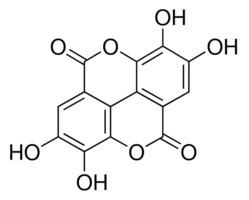
The highest levels of ellagic acid are found in walnuts, pecans, cranberries, raspberries, strawberries, and grapes, as well as distilled beverages. It is also found in peach, and other plant foods.
Medicinal claims and research
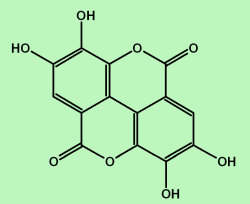
Ellagic acid has antiproliferative and antioxidant properties in a number of in vitro and small-animal models. The antiproliferative properties of ellagic acid may be due to its ability to directly inhibit the DNA binding of certain carcinogens, including nitrosamines and polycyclic aromatic hydrocarbons. As with other polyphenol antioxidants, ellagic acid has a chemoprotective effect in cellular models by reducing oxidative stress.
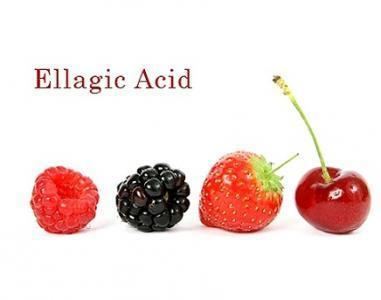
Ellagic acid has been marketed as a dietary supplement with a range of claimed benefits against cancer, heart disease, and other medical problems. Ellagic acid has been identified by the U.S. Food and Drug Administration as a "fake cancer 'cure' consumers should avoid". A number of U.S.-based sellers of dietary supplements have received Warning Letters from the Food and Drug Administration for promoting ellagic acid with claims that violate the Federal Food, Drug, and Cosmetic Act.
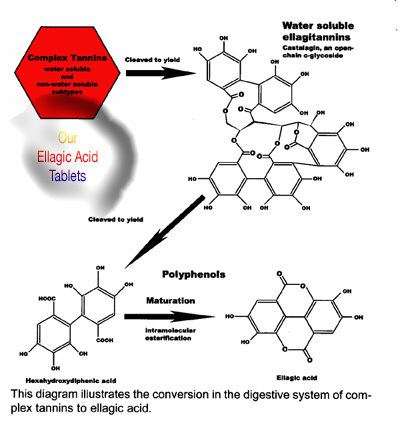
Urolithins, such as urolithin A, are microflora human metabolites of dietary ellagic acid derivatives that are under study as anti-cancer agents. Claims that ellagic acid can treat or prevent cancer in humans have not been proven.
